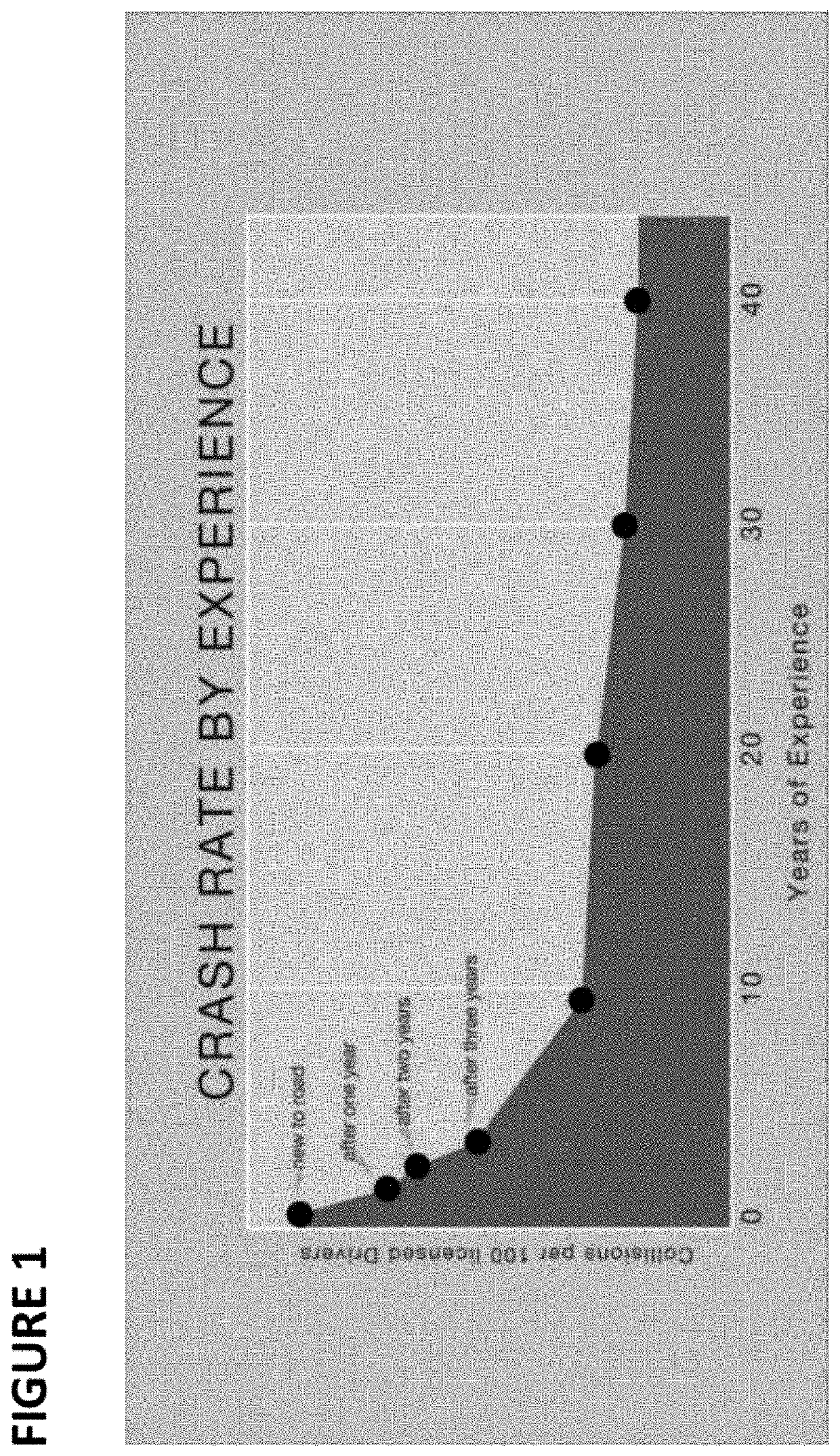Behaviorally-based crash avoidance system
a crash avoidance system and behavior-based technology, applied in the field of behavior-based crash avoidance systems, can solve the problems of increasing the risk of collisions, reducing the crash rate, and little or no crash reduction benefit associated with the effect of driving inexperienced drivers
- Summary
- Abstract
- Description
- Claims
- Application Information
AI Technical Summary
Benefits of technology
Problems solved by technology
Method used
Image
Examples
Embodiment Construction
[0031]Described herein are various embodiments of a method and system whereby motor vehicle operators can be trained to reduce the probability that they will be involved in car accidents. As used herein, “motor vehicle operator” comprises motor vehicle drivers with little experience (e.g., student drivers), motor vehicle drivers with some experience (e.g., less than 5 years driving experience, e.g., new drivers such as teens or adults who recently acquired a training license or a new driver's license), motor vehicle drivers with less than 5 years experience driving a new type of vehicle (e.g., a car driver who is now transitioning to a new class of driving, e.g., to fleet driving) or a driver with greater than 5 years of driving experience who seeks to refresh his driving skills (e.g., to avoid accumulating points against his license as a result of a driving infraction). A motor vehicle operator participating in crash-avoidance training discussed herein is referred to herein as a “t...
PUM
 Login to View More
Login to View More Abstract
Description
Claims
Application Information
 Login to View More
Login to View More - R&D
- Intellectual Property
- Life Sciences
- Materials
- Tech Scout
- Unparalleled Data Quality
- Higher Quality Content
- 60% Fewer Hallucinations
Browse by: Latest US Patents, China's latest patents, Technical Efficacy Thesaurus, Application Domain, Technology Topic, Popular Technical Reports.
© 2025 PatSnap. All rights reserved.Legal|Privacy policy|Modern Slavery Act Transparency Statement|Sitemap|About US| Contact US: help@patsnap.com



